Do you have a question about the Sylvania LC320SLX and is the answer not in the manual?
Essential guidelines for safe operation and maintenance of the apparatus.
Information regarding FCC regulations and potential radio or television interference.
Precautions to avoid electrical shock and fire risks during operation.
Guidelines for placing and handling the unit to ensure safety and performance.
Information on recycling packaging and safe practices for carrying the unit.
Details about registered trademarks of the product and its components.
Lists all components included in the product package.
Step-by-step instructions for assembling the TV stand.
Describes the unit's ability to receive analog, digital, and cable TV broadcasts.
Covers functions like Autoscan, Child Lock, and Closed Caption Decoder.
Details on Auto Shut Off, Sleep Timer, and language settings.
Lists various input options including HDMI, Component, S-video, and audio outputs.
Identifies and explains the buttons and indicators on the front of the TV.
Details all input and output ports located on the back of the TV.
Explains the function of each button on the remote control.
Provides instructions and precautions for inserting batteries into the remote.
Guides on connecting antennas and cable/satellite receivers.
Instructions for connecting devices via component video and HDMI cables.
Details on connecting devices using HDMI and HDMI-DVI conversion cables.
Instructions for connecting devices using component video cables for better picture quality.
Steps for connecting devices via S-video for good picture quality.
How to connect devices using standard RCA video cables.
Connecting external devices for digital or analog audio output.
How to connect the TV to a PC via HDMI and use it as a monitor.
Guides on managing cables and plugging in the AC power cord.
Setting the location (Retail/Home) and on-screen display language.
Choosing between antenna or cable for initial channel scanning.
Initiating the automatic channel scanning process.
How to select channels using the remote or number buttons.
Adjusting audio volume and using the mute function.
Instructions on how to set the automatic turn-off timer.
How to pause the TV screen image.
Changing between different input sources and audio modes.
Shows channel number, audio mode, and program details.
Options for adjusting picture aspect ratio for different video signals.
Display modes available when the unit is used as a PC monitor.
How to open the main settings menu using the SETUP button.
Rescanning channels after initial setup or relocation.
Skipping or reactivating channels in the list.
Adding channels not found during autoscan.
Verifying the digital signal strength for each channel.
Changing the language for menus and on-screen text.
Fine-tuning brightness, contrast, color, tint, and sharpness.
Selecting preset picture modes like 'Standard' or 'Movie'.
Customizing sound output and frequency response.
Managing audio output between TV speakers and external amplifiers.
Enabling and configuring basic closed caption services.
Explains different caption display modes like Paint-on, Pop-on, and Roll-up.
Setting up digital caption services and selecting specific broadcast data.
Adjusting font, size, color, and opacity of captions.
Modifying font, edge, and background properties of captions.
Important notes regarding caption display, signal quality, and HDMI limitations.
Setting program rating limits and blocking channels.
Setting or resetting the Personal Identification Number for child lock.
Making specific channels or input modes invisible.
Overview of the MPAA rating system and how to block content.
Adjusting TV ratings (e.g., TV-MA, TV-14) to block content.
Fine-tuning blocking for specific elements like violence or language.
How to create and confirm a new PIN for child lock.
Fine-tuning the horizontal and vertical position of the PC display.
Restoring the PC screen position to default settings.
Enabling or disabling power saving features to reduce consumption.
Choosing between 'Home' and 'Retail' modes affecting power settings.
Displays the current software version installed on the unit.
Solutions for problems with the remote control and initial setup.
Addressing issues with program viewing, external devices, and captions.
Solutions for no power, no image, or picture/sound issues.
Troubleshooting steps for color problems, noise, and interference.
Explains behavior when switching inputs and screen size changes.
Resolving problems with caption display, including interference and box appearances.
Definitions of technical terms used in the manual.
Guidelines for cleaning the unit and when to seek professional service.
Chart showing typical cable channel assignments.
Details on terminals, power, dimensions, and weight.
Details on what the warranty covers, its limitations, and exclusions.
Contact information and procedures for warranty service.
Essential guidelines for safe operation and maintenance of the apparatus.
Information regarding FCC regulations and potential radio or television interference.
Precautions to avoid electrical shock and fire risks during operation.
Guidelines for placing and handling the unit to ensure safety and performance.
Information on recycling packaging and safe practices for carrying the unit.
Details about registered trademarks of the product and its components.
Lists all components included in the product package.
Step-by-step instructions for assembling the TV stand.
Describes the unit's ability to receive analog, digital, and cable TV broadcasts.
Covers functions like Autoscan, Child Lock, and Closed Caption Decoder.
Details on Auto Shut Off, Sleep Timer, and language settings.
Lists various input options including HDMI, Component, S-video, and audio outputs.
Identifies and explains the buttons and indicators on the front of the TV.
Details all input and output ports located on the back of the TV.
Explains the function of each button on the remote control.
Provides instructions and precautions for inserting batteries into the remote.
Guides on connecting antennas and cable/satellite receivers.
Instructions for connecting devices via component video and HDMI cables.
Details on connecting devices using HDMI and HDMI-DVI conversion cables.
Instructions for connecting devices using component video cables for better picture quality.
Steps for connecting devices via S-video for good picture quality.
How to connect devices using standard RCA video cables.
Connecting external devices for digital or analog audio output.
How to connect the TV to a PC via HDMI and use it as a monitor.
Guides on managing cables and plugging in the AC power cord.
Setting the location (Retail/Home) and on-screen display language.
Choosing between antenna or cable for initial channel scanning.
Initiating the automatic channel scanning process.
How to select channels using the remote or number buttons.
Adjusting audio volume and using the mute function.
Instructions on how to set the automatic turn-off timer.
How to pause the TV screen image.
Changing between different input sources and audio modes.
Shows channel number, audio mode, and program details.
Options for adjusting picture aspect ratio for different video signals.
Display modes available when the unit is used as a PC monitor.
How to open the main settings menu using the SETUP button.
Rescanning channels after initial setup or relocation.
Skipping or reactivating channels in the list.
Adding channels not found during autoscan.
Verifying the digital signal strength for each channel.
Changing the language for menus and on-screen text.
Fine-tuning brightness, contrast, color, tint, and sharpness.
Selecting preset picture modes like 'Standard' or 'Movie'.
Customizing sound output and frequency response.
Managing audio output between TV speakers and external amplifiers.
Enabling and configuring basic closed caption services.
Explains different caption display modes like Paint-on, Pop-on, and Roll-up.
Setting up digital caption services and selecting specific broadcast data.
Adjusting font, size, color, and opacity of captions.
Modifying font, edge, and background properties of captions.
Important notes regarding caption display, signal quality, and HDMI limitations.
Setting program rating limits and blocking channels.
Setting or resetting the Personal Identification Number for child lock.
Making specific channels or input modes invisible.
Overview of the MPAA rating system and how to block content.
Adjusting TV ratings (e.g., TV-MA, TV-14) to block content.
Fine-tuning blocking for specific elements like violence or language.
How to create and confirm a new PIN for child lock.
Fine-tuning the horizontal and vertical position of the PC display.
Restoring the PC screen position to default settings.
Enabling or disabling power saving features to reduce consumption.
Choosing between 'Home' and 'Retail' modes affecting power settings.
Displays the current software version installed on the unit.
Solutions for problems with the remote control and initial setup.
Addressing issues with program viewing, external devices, and captions.
Solutions for no power, no image, or picture/sound issues.
Troubleshooting steps for color problems, noise, and interference.
Explains behavior when switching inputs and screen size changes.
Resolving problems with caption display, including interference and box appearances.
Definitions of technical terms used in the manual.
Guidelines for cleaning the unit and when to seek professional service.
Chart showing typical cable channel assignments.
Details on terminals, power, dimensions, and weight.
Details on what the warranty covers, its limitations, and exclusions.
Contact information and procedures for warranty service.
| Screen Size | 32 inches |
|---|---|
| Display Type | LCD |
| Resolution | 1366 x 768 |
| Aspect Ratio | 16:9 |
| HDMI Ports | 2 |
| USB Ports | 1 |
| Weight | 9.9 kg (21.8 lbs) |
| Component Video Input | 1 |
| Composite Video Input | 1 |
| VGA Input | 1 |
| Brightness | 450 cd/m² |
| Response Time | 8 ms |
| Audio Output | 10W x 2 |
| Viewing Angle | 176° |
| Inputs | HDMI, Component, Composite, VGA |
| Contrast Ratio | 3000:1 (dynamic) |
| Dimensions (W x H x D) | 31.3 x 22.4 x 9.1 inches (with stand) |
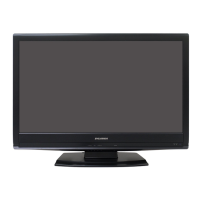

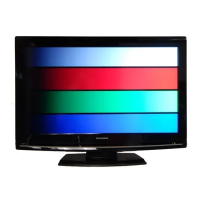
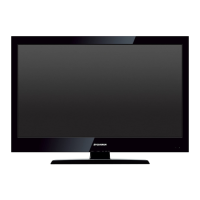
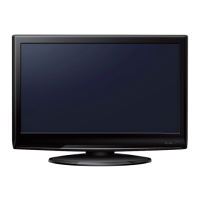
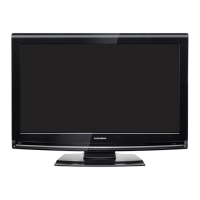
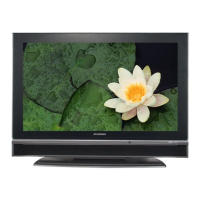
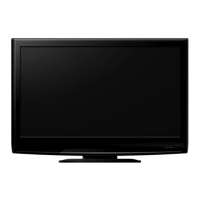
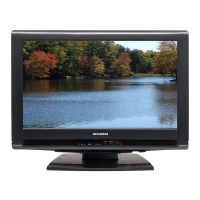
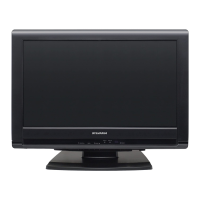
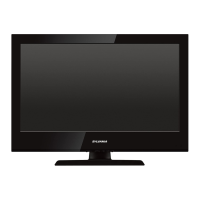
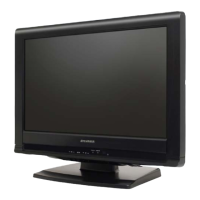
